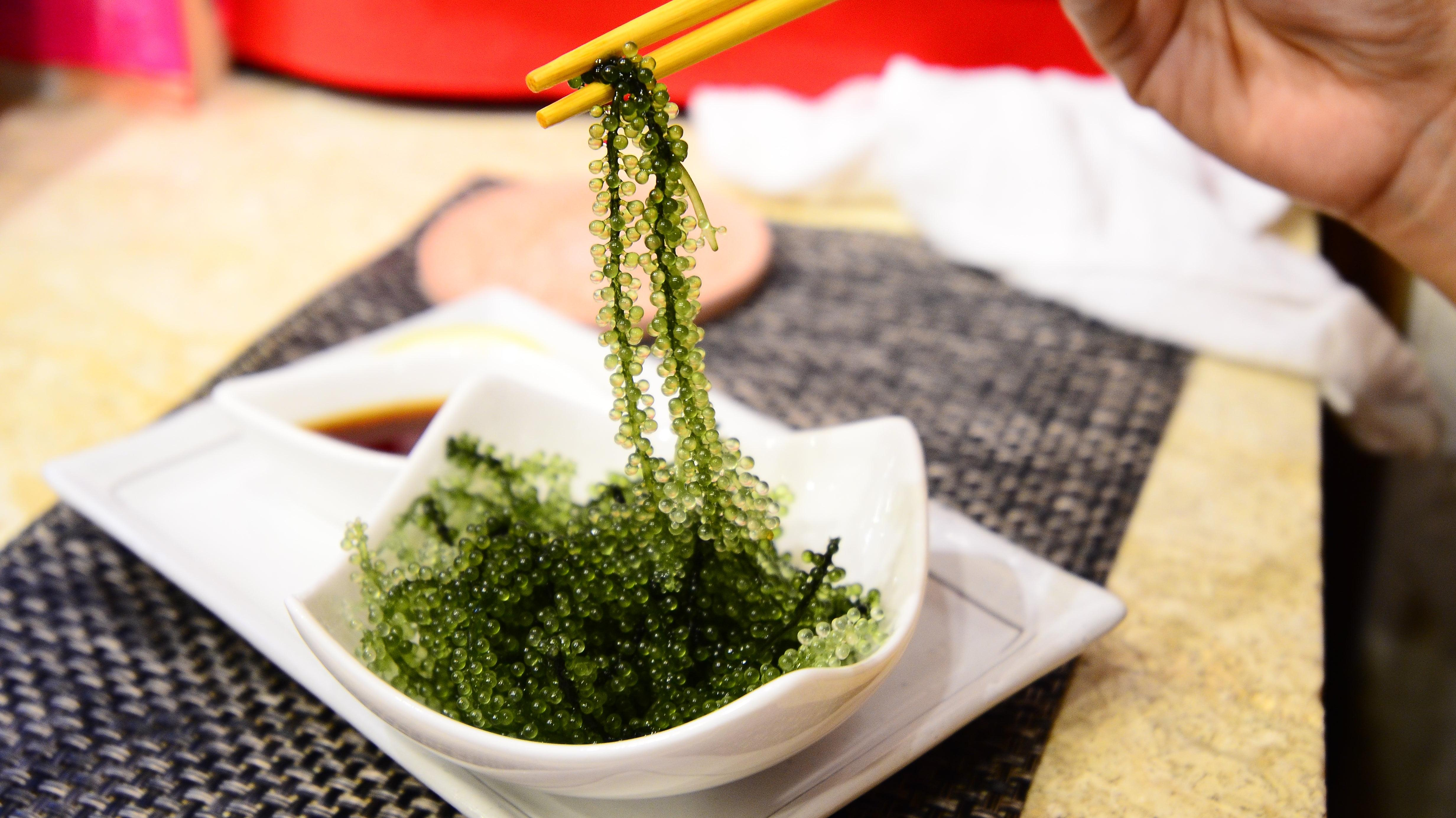You Can Eat These Vegetables From Under The Sea
Underwater produce is good for you and the environment—not to mention tasty.
We may receive a commission on purchases made from links.
I fear the depths of the ocean. Not only am I a below average swimmer, but I also get a shiver down my spine when I think of just how large animals like squids and whales are, just sharing this earth with us. But the one thing that keeps me reconsidering my stance on the sea is the abundance of food it provides us. Yes, the fish and crustaceans and other shellfish get all the credit, but beyond that there's an entire ecosystem of fresh produce just waiting to be plucked and served here on land.
Edible underwater produce and how to use them
Seaweed has long been recognized as an edible plant, being used to create dishes like sushi or served in dried strips as a crunchy seaweed snack. Kelp is now not far behind in popularity, serving as a top ingredient in some plant-based meat ventures. And there are far more edible greens from under the sea to be had, most providing an umami flavor similar to mushrooms.
Seaweed itself comes in many different varieties that serve different purposes:
- Carrageenan. A seaweed native to the British Isles that is mostly used as a thickening agent in ice creams, puddings, and more.
- Cochayuyo. A briny, chewy seaweed popular in Chilean food, often used as a meat substitute.
- Dulse. A red seaweed that, according to Bon Appétit, tastes just like bacon and is typically dried out to snack on.
- Kombu. A Japanese seaweed that is thicker and tougher than others, making it useful in soup stocks.
- Wakame. Also known as sea mustard, this is what you'll see in miso soup.
- Sea Beans. Also known as sea asparagus, these beans are known for their salty, grassy taste and snappy bite.
- Sea Grapes. These tiny, briny beads are being used as a sustainable, fish-free stand-in for caviar.
- Sea Purslane. This underwater, flowering succulent is salty and crunchy, and is often pickled in Filipino cuisine.
Beyond seaweed, these pieces of underwater produce are worth trying:
The benefits of eating sea vegetables
Other than trying something new, what's the real benefit of going to the ocean's floor for produce? For one, farming sea vegetables has a smaller carbon footprint than land vegetables, Forbes reports. This produce can be grown in the ocean or in a tank, reducing the need to over-farm the land, and doesn't even need fresh water to thrive. According to Forbes, a team of researchers at Florida Atlantic University's Harbor Branch Oceanographic Institute grew more than 100 pounds of sea asparagus and sea purslane in 10 weeks with just salt water and fish waste for fertilizer.
And like other fruits and vegetables, sea vegetables are chock-full of not only nutrients and antioxidants, but also iodine and tyrosine, which help keep your thyroid in check. As with any item, be careful not to eat too much of a good thing—excess iodine isn't always good for your body.
These veggies have been used in dishes for centuries and are now starting to pop up more and more on menus in modern North American cuisine. Now is the time to face your fear of the ocean and embrace these underwater ingredients.
